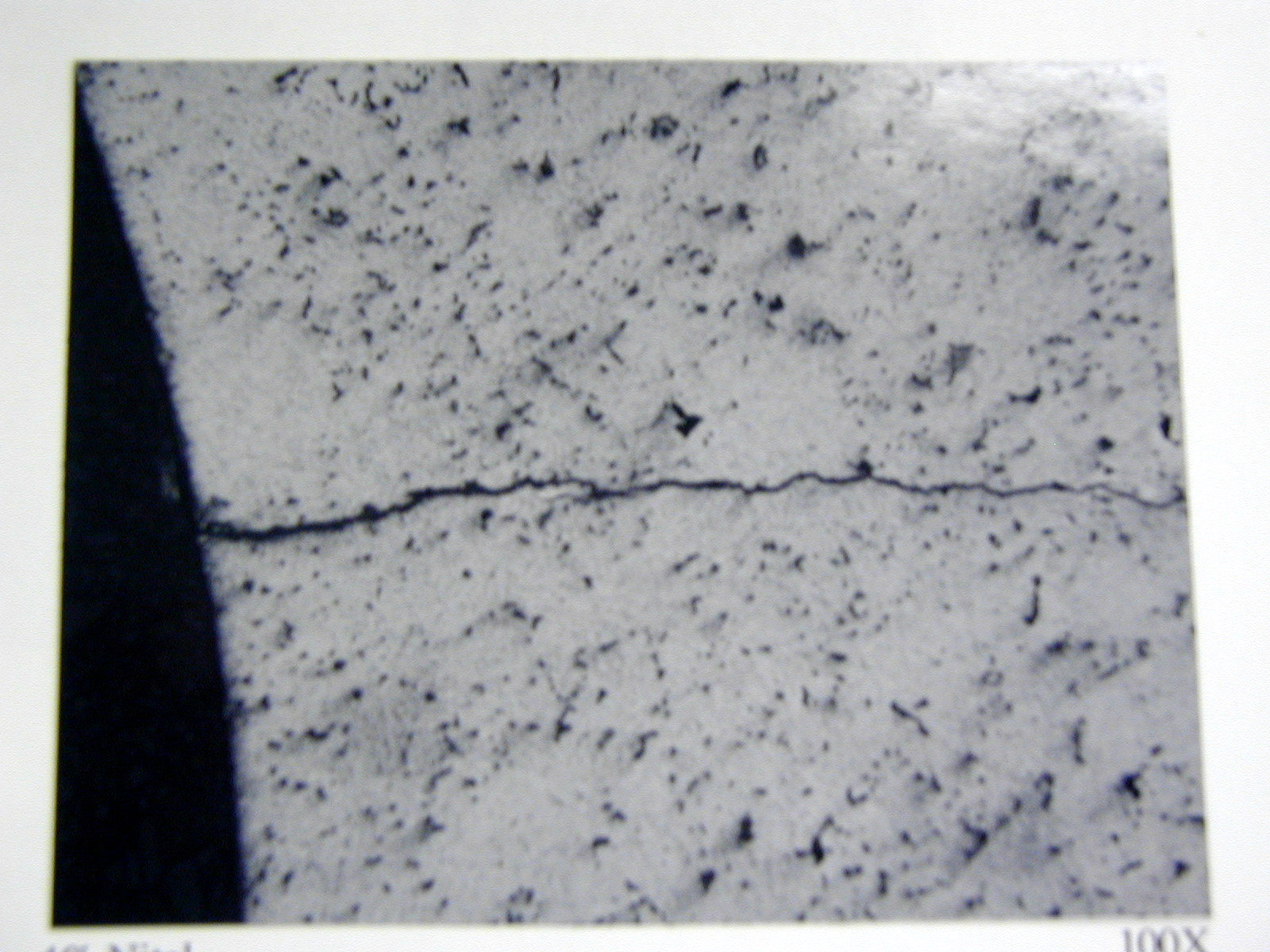Heat Treatment Cracks: Causes and Prevention
The heat treating process can be an intensely stressful process for the material involved. The material must first be heated to the point where austenitization can occur, and then cooled rapidly enough to have the transformation into martensite take place, but avoid the possibility cracking. It can be a delicate process at times.
Cracking during heat treat can be caused by several factors. One of the factors that may initiate a crack may be the heating of the material itself. As the material is heated it undergoes a volumetric change both as a result of transformation products being produced and thermal expansion. At times “cracks” that become evident during this phase are really material imperfections, seams and inclusions from the manufacturing process.

Heat treatment cracks can occur from uneven quenching. While this can be somewhat controlled during the quenching cycle, it is also a major function of part geometry and should be considered during the design stage of the component. Holes, sharp edges, grooves, slots and corners can all be potential crack initiation zones. At a sharp edge or edge of a hole for example, the heating and cooling rates can be substantially higher than the surrounding areas. This puts tremendous strain on the material in these regions during the heating and quenching cycles. While those features may be necessary in the component, it is important to exercise good engineering practices and properly chamfer or radius those areas to prevent sharp corners and edges. When this is not practical, certain materials may be placed in holes and other critical areas to help act as a heat sink and dampen the shock during the quenching operation, this can be costly and the efficiency of the heat treat operation will suffer.
Additionally material selection and process can contribute to the possibility of cracking. High carbon and alloy materials with high hardenability often exhibit a higher tendency to initiate and propagate cracks. Also, as is the case often with Induction heat treating of multiple zones, care must be taken to temper the material before subsequent heat treating, especially if the zones are close together or part geometry or specific requirements mandate it.
We at Zion Industries look forward to working with you on specific parts that may be a problem currently or that you may have had a problem with cracking in the past. Our team would be happy to evaluate the project and help offer a solution.
Lou Ghinga
Zion Industries, Inc.
